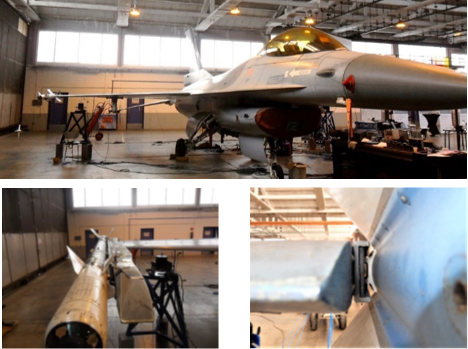F16 Aircraft - GVT to nonlinear modeling
In 2012 and 2014 in collaboration with Siemens Industry Software, our team carried out a GVT of a F-16 in a Belgian airforce base. Preliminary linear analysis of the test results presents obvious symptoms of a nonlinear vibrating structure such as FRFs varying with forcing level and nonlinear distortion of the resonance peaks. This originate from stiffness and damping changes, and mode variability, typical of nonlinear structures. Nevertheless, linear tools can only hint at nonlinear behavior, they are ill-suited to properly study and characterize this dynamics, but also to properly confirm nonlinearity sources and location.
Problem
- Inaccurate prediction of aero-elastic behavior
- Lengthy certification for each new payload
- Fatigue Issues
- Inability to identify the problem
Impact
- High certification cost
- Lower performance
- High operation cost


Root cause
The F-16 wing-to-payload connection is highly nonlinear. Usual tools were not able to identify this challenge so that structural models were not accurately matching reality.

Solution
Proper identification of the nonlinear connection and creation of a nonlinear model allowed to properly represent the dynamics of the aircraft structure.

Benefits
The main benefit is an efficiency gain, the design of the connection cannot be changed but payload certification is made much faster. Such a model also allows for better design of future generation structures.

